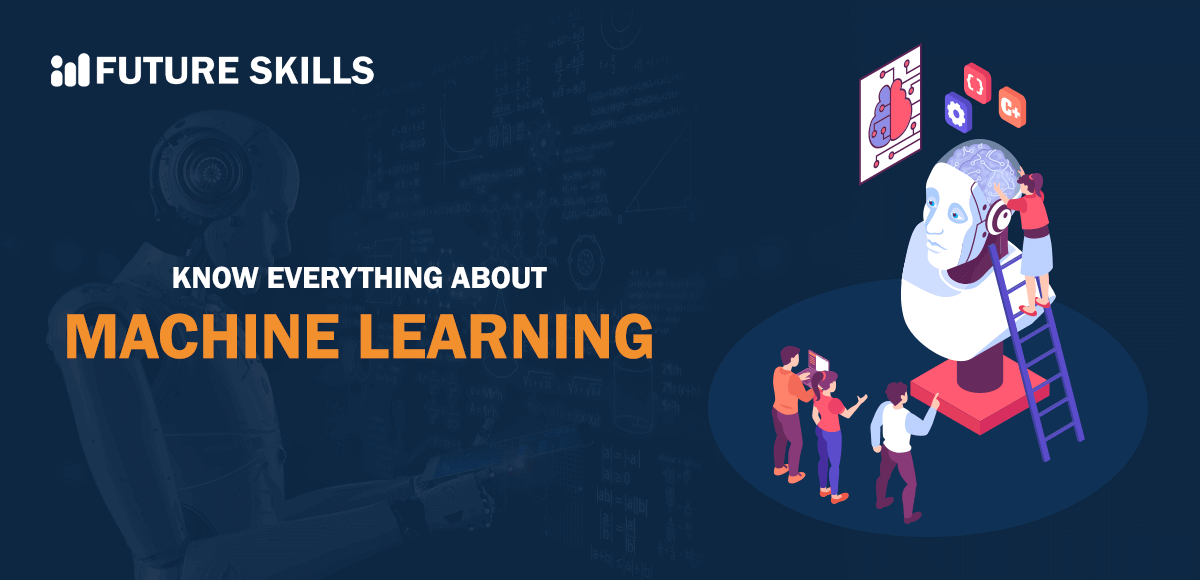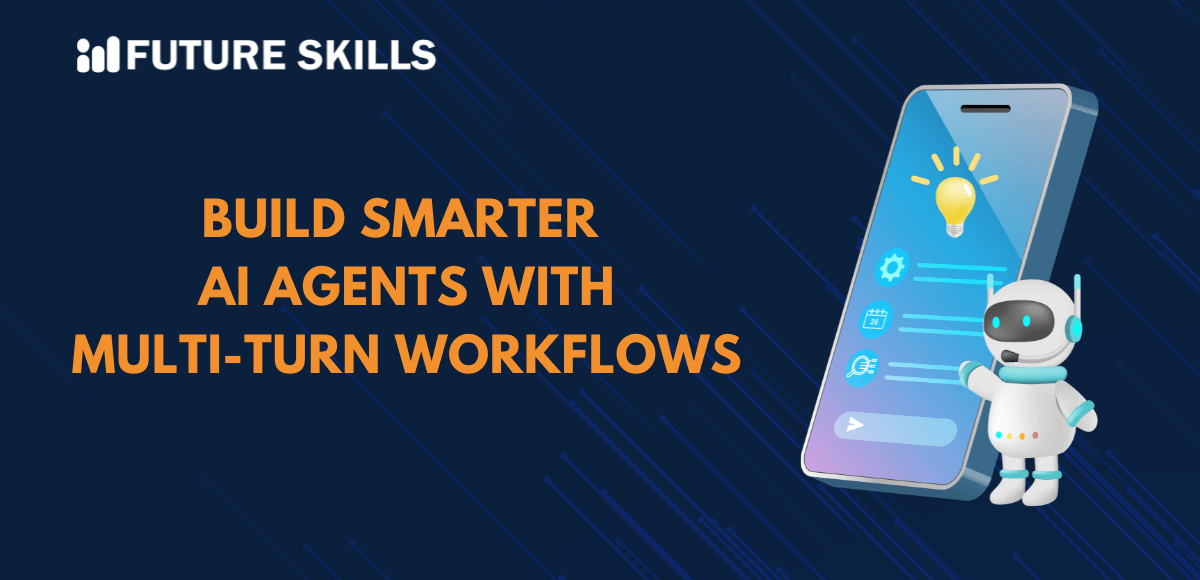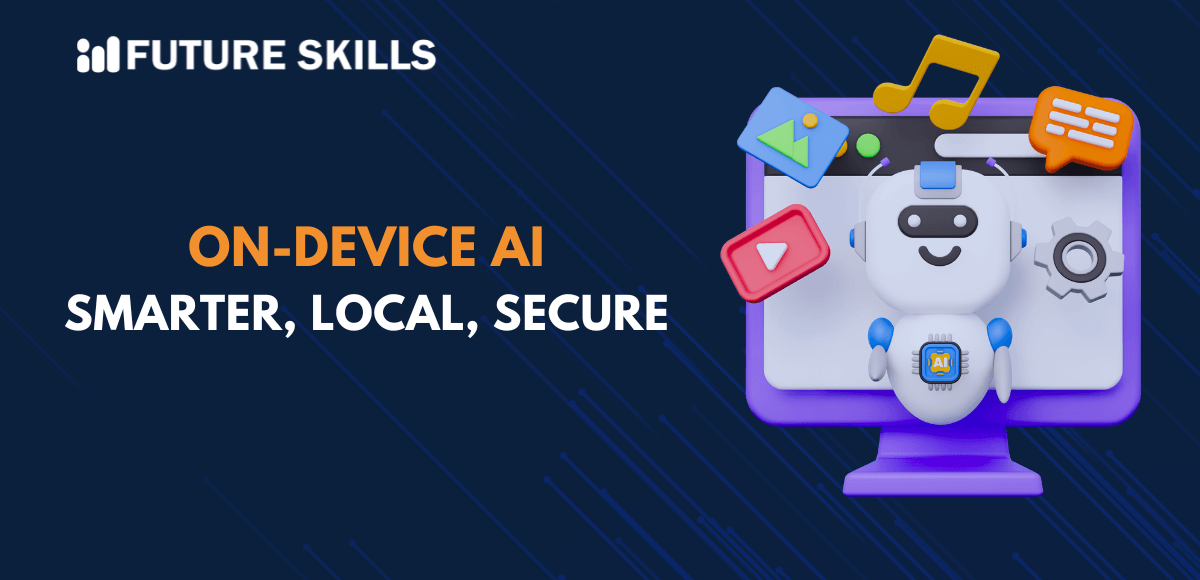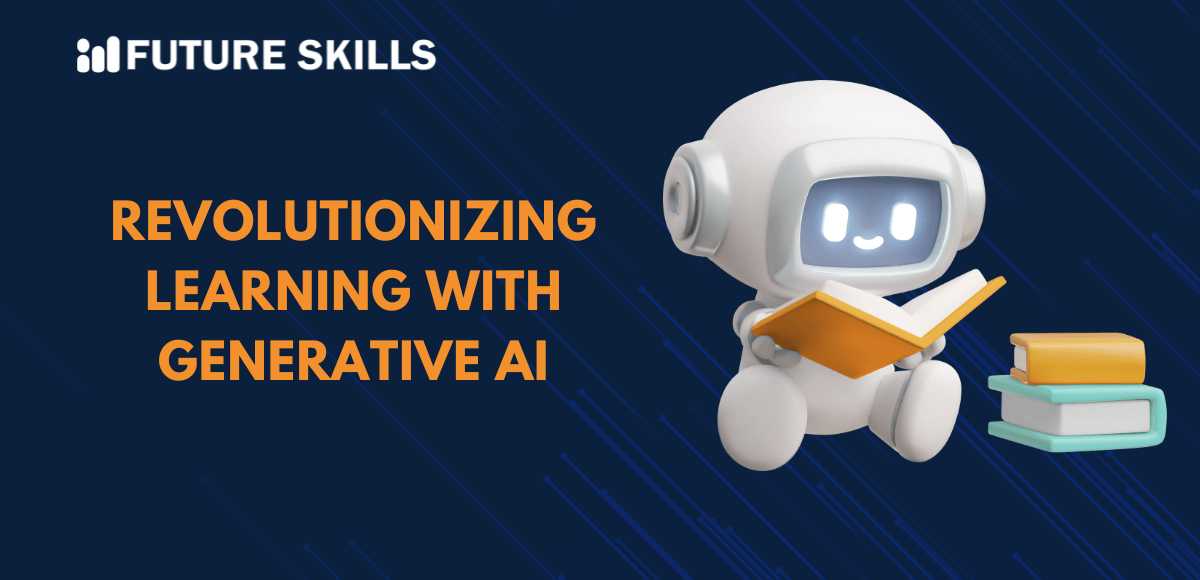The impressive pace of digital transformation continues on a golden run as innovative technologies make a huge impact. It is important to understand how such technologies provide a new perspective on conventional operations, systems, and processes in business and everyday lives of people. You are here to learn machine learning fundamentals because it is one of the foremost technologies that are leading the efforts in digital transformation.
Machine learning, or ML, has affected almost every industry with positive outcomes such as personalized customer service and capabilities for processing massive volumes of data in a limited time. The simplest explanation for machine learning paints it as a subdomain or variant of AI that focuses on helping computer systems or machines learn from data. ML techniques play a major role in helping software applications and computer systems improve their performance and functionalities as time passes.
Machine learning has been adopted across different industries for its impressive capabilities. You must learn about the working of machine learning algorithms to understand the reasons behind rising adoption of ML. The basic premise of the working mechanism of ML algorithms emphasizes finding relationships and patterns in data.
The algorithms utilize historical data to classify information, organize data points, make predictions, and even generate new content. As the discussions about machine learning gain momentum due to the popularity of tools such as ChatGPT, DALL-E 2, and Midjourney, it is important to learn about the foundations of machine learning. In the following post, we will find out more about the definition, working mechanism, and different variants of machine learning.
Become a certified ChatGPT expert and learn how to utilize the potential of ChatGPT that will open new career paths for you. Enroll in Certified ChatGPT Professional (CCGP)™ Certification.
Understanding the Fundamentals of Machine Learning
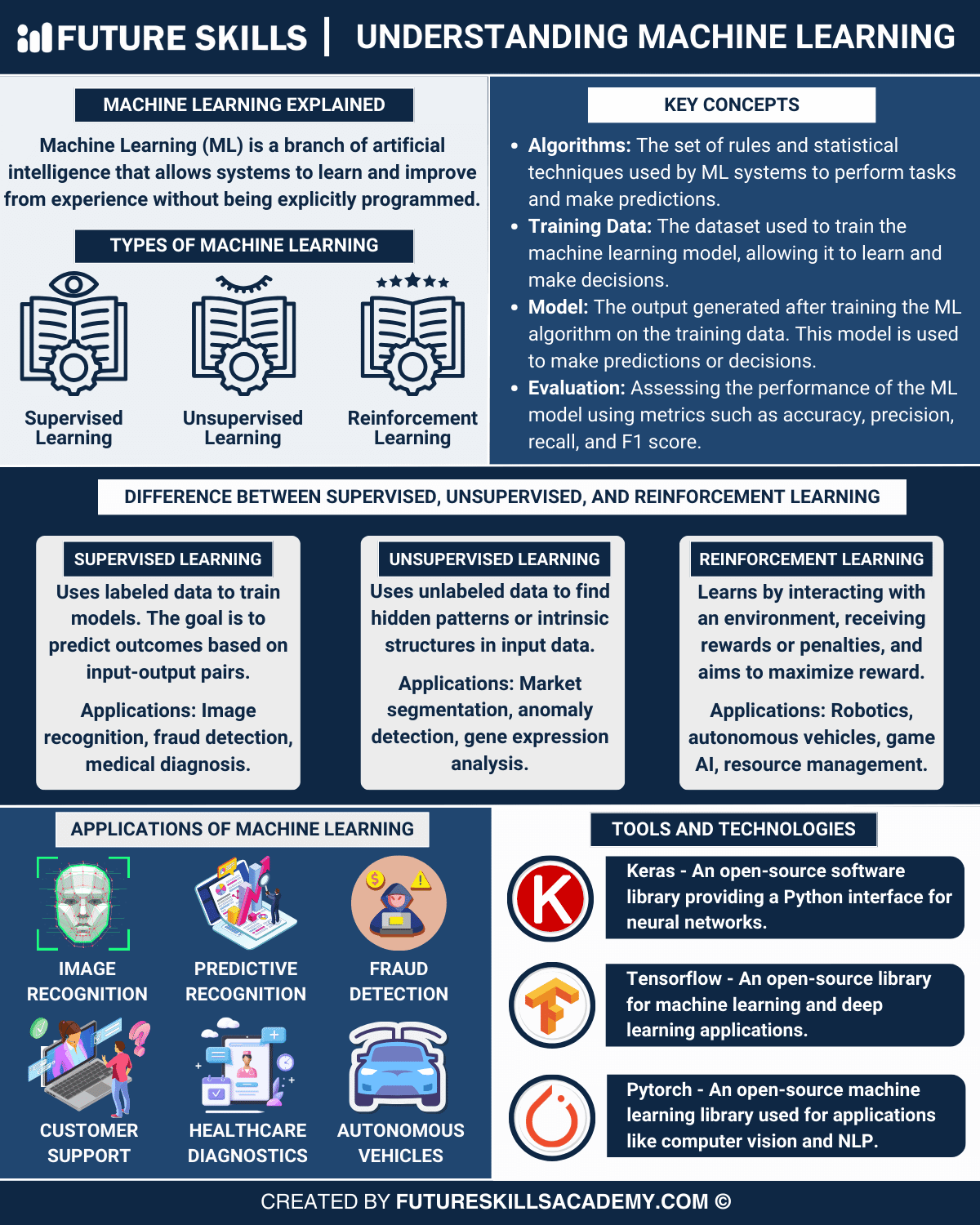
The first thing you need to explore in a guide on machine learning is the definition of the term. IBM defines machine learning as a variant of artificial intelligence that focuses on improving the capabilities of software systems for processing and categorization of data. However, any other machine learning tutorial describes machine learning as a subdomain of artificial intelligence. Machine learning involves creation of computer algorithms that learn from data and improve their experience and capabilities accordingly. In a way, machine learning helps computer systems learn from data and make relevant predictions or decisions without any explicit programming.
The working mechanism of machine learning focuses on development and implementation of algorithms that make decisions and make predictions for computer systems. It is important to note that the design of the algorithms is tailored for continuous improvement in performance with time. The machine learning working mechanism involves improvement in accuracy and effectiveness of ML algorithms by processing more data.
Computer systems had to follow a specific collection of predefined instructions for performing a task in conventional programming. However, machine learning makes a huge difference by offering a set of examples to the computer system and a task that it has to perform. Without any specific instructions, the computer system must find out how to complete the given task based on available examples.
Simple Demonstration of Machine Learning Algorithm
Let us assume that you want a computer system to recognize images of dogs without providing any specific instructions about their appearance. On the contrary, you have to offer thousands of images of dogs, and the ML algorithm will find the common features and patterns that define a dog.
The explanations for how does machine learning work in such simple examples also revolve around continuous improvement of the algorithm. As the ML algorithm processes more images of dogs, it will become better and more accurate at recognizing dogs, even in completely new images.
Level up your ChatGPT skills and kickstart your journey towards superhuman capabilities with Free ChatGPT and AI Fundamental Course.
Is Machine Learning Different from AI and Deep Learning?
In some cases, machine learning is used interchangeably with artificial intelligence and deep learning. However, it is important to understand that the terms are different from each other. You can explore the details of differences between artificial intelligence and machine learning in different online posts. Artificial intelligence revolves around developing programs that can simulate human intelligence by leveraging algorithms.
On the other hand, machine learning is actually a subdomain of AI. One of the most prominent features of machine learning is the ability to learn from data and make predictions. ML algorithms use different types of techniques, such as supervised learning, unsupervised learning, semi-supervised learning, and reinforcement learning. These techniques help ML algorithms discover different patterns in data.
Deep learning is a subdomain of machine learning that focuses on algorithms that use multi-layered artificial neural networks or ANNs. Artificial neural networks have a similar structure to that of the human brain. As compared to conventional machine learning algorithms, deep learning algorithms are more complex and less linear.
Level up your AI skills and embark on a journey to build a successful career in AI with our Certified AI Professional (CAIP)™ program.
Why is Machine Learning Important?
Before you dive deeper into this machine-learning tutorial, you must learn about the importance of machine learning. Take a look at the existing technological landscape and think about the most valuable asset everyone has with them. Data is the most critical determinant of the difference between success and failure of a business or an individual.
However, zillions of data repositories worldwide lie unused without any specific utility. At this point of time, the importance of data cannot be undermined, thereby calling for attention to machine learning. Machine learning is important in today’s world as it sets new benchmarks in data processing, supporting automation and fuelling innovation.
The US Bureau of Labor Statistics has predicted that the number of jobs in machine learning will increase by 21% in the period from 2021 to 2031. It clearly suggests that machine learning has been expanding as an industry. Most of the leading tech companies, including Google, Uber, and Facebook, have adopted machine learning as a core element of their operations.
The 2023 AI and Machine Learning Research Report by Rackspace Technology reveals that around 72% of companies in the survey had integrated machine learning into their business and IT strategies. You would find motivation to learn machine learning from the fact that almost 69% of companies in the research report perceived AI and ML as the most important technologies.
Almost 67% of the respondents claimed that ML adoption has helped them improve existing processes. On top of that, 60% of the respondents used ML as a tool for predicting industry trends and business performance. 53% of respondents in the research suggested that machine learning helped them with risk reduction.
Variants of Machine Learning
The usual explanation for machine learning working mechanisms brings the learning journey of ML algorithms to the limelight. However, you must also note that ML algorithms use different techniques to learn from data, depending on the use case. You can find four different types of machine learning: supervised learning, unsupervised learning, semi-supervised learning, and reinforcement learning. Data scientists choose the type of algorithm according to the nature of the data in question. Here is an overview of the different types of machine learning.
-
Supervised Learning
The first variant of machine learning techniques is supervised learning. It is one of the top additions among examples for ‘how does machine learning work’ and involves the use of labeled training data. Supervised learning also utilizes definition of variables that the algorithm can use for drawing correlations.
Supervised learning involves clear specification of the input and output of the algorithm. Most of the conventional ML algorithms utilize supervised learning. Examples of different tasks that you can address with supervised learning algorithms include binary classification, regression modeling, multiclass classification, and ensembling.
-
Unsupervised Learning
Unsupervised machine learning focuses on using algorithms that do not require labeling of data. The working mechanism of unsupervised ML algorithms involves sifting through unlabeled data to identify patterns that can help categorize data points into subsets. It is important to note that unsupervised machine learning algorithms play a major role in empowering deep learning. Unsupervised learning can serve as a useful tool for tasks such as clustering, dimensionality reduction, and anomaly detection. It can also help in association rule mining to discover frequently occurring sets of items in datasets.
-
Semi-Supervised Learning
As the name implies, semi-supervised learning features some traits of supervised and unsupervised learning. It involves the use of a small volume of labeled training data for the algorithms. The data helps the algorithm learn dimensions of the dataset, which can be applicable to the new unlabeled data. The performance of semi-supervised algorithms generally improves through training on labeled datasets.
However, data labeling can be an expensive and time-consuming task. With semi-supervised learning, you can achieve the efficiency of unsupervised learning and performance of supervised learning. Semi-supervised learning can help address different tasks, such as data labeling, machine translation, and fraud detection.
-
Reinforcement Learning
Another notable addition to the techniques for machine learning is reinforcement learning. It involves working through programming an algorithm with a specific objective and a predefined set of rules for achieving the desired goals. Data scientists can also help program the algorithm to obtain positive rewards and perform actions that help achieve the ultimate goal.
At the same time, the algorithm also emphasizes avoiding penalties for performing actions that can move farther away from the goal. Reinforcement learning can help address different types of tasks, such as robotics, resource management, and video gameplay.
Working Mechanism of Machine Learning
You can understand the features of machine learning by identifying how ML works. The working mechanism of ML algorithms leverages a step-by-step process for transformation of raw data into valuable insights. Here are the important steps involved in machine learning.
-
Data Collection
Data collection is the essential process to start machine learning by obtaining data from different sources, such as databases, audio files, text files, and images. You must also prepare the data for machine learning by organizing it in a suitable format.
-
Data Preprocessing
Data preprocessing is an important detail in the machine learning working mechanism as it is a crucial step for refining the data. It also helps manage missing data and normalize it. Preprocessing enhances the quality of data and ensures correct interpretation by the machine learning model.
-
Selecting the Ideal Model
After preparation of the data, you must focus on selecting the machine learning model. You can come across different variants of models, such as linear regression, neural networks, and decision trees. The choice of model would be based on the problem you want to solve and the nature of data.
-
Model Training
Once you have selected the model, the next step involves training the model by leveraging the processed data. Training of the model focuses on feeding the data and allowing it to modify internal parameters for better output prediction. During the training process, you must avoid overfitting and underfitting.
-
Evaluation of the Model
After completing the model training, you must evaluate the model’s performance prior to deployment. You can learn machine learning and its potential to achieve wonders by checking how it works on new data. Some of the notable metrics for measuring the performance of a model include accuracy, mean squared error, precision, and recall.
-
Optimization and Tuning
The next stage in machine learning involves adjusting the hyperparameters to achieve performance improvements. Techniques used in hyperparameter tuning include cross-validation and grid search.
-
Prediction and Deployment
Training and optimization of the model will prepare it for drawing predictions on new data. You can complete the process by deploying the ML model in a production environment where it will process data in real time and provide valuable insights for real-world use cases.
Excited to understand the crucial requirements for developing responsible AI and the implications of privacy and security in AI, Enroll now in the Ethics of Artificial Intelligence (AI) Course
Final Words
The machine learning tutorial revealed how machine learning is an important subdomain of AI and empowers advancements in AI. Machine learning works to improve the capability of computer systems and software applications over the course of time by processing more data. Algorithms are the core element in the machine learning landscape and utilize different techniques for training models to achieve desired tasks.
Supervised learning, unsupervised learning, semi-supervised learning, and reinforcement learning provide a clear impression of different functionalities of machine learning. Big names in the world of technology are using the features of machine learning to create advanced systems and offer new functionalities to end users. Therefore, machine learning has emerged as a promising career opportunity for many aspiring professionals. Learn more about machine learning and choose your desired career path in AI right now.

